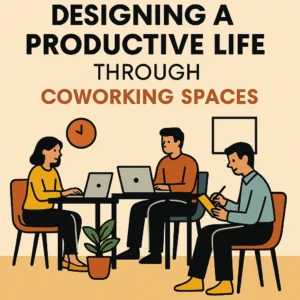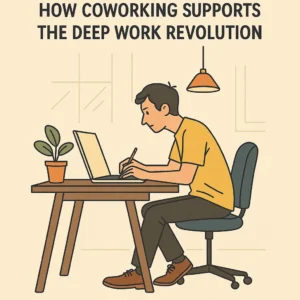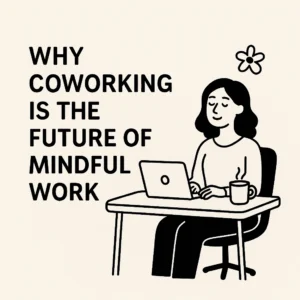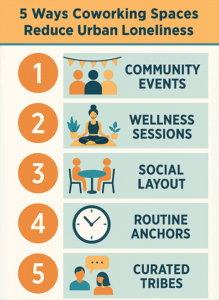A Strategic Breakdown of what went wrong at BYJUs, India’s EdTech Giant.
In the early days, there was a spark — the classic founder’s story. A passionate teacher took a weekend classroom in Bangalore and turned it into the largest edtech brand in India. That spark became a blaze, fueled by funding, valuations, and a belief that learning could be productized at scale. BYJU’S didn’t just grow — it exploded. But explosions are dangerous when the vessel isn’t built to hold the pressure.
What followed was a masterclass in how not to scale.
This is a strategic breakdown of what went wrong — not from a place of criticism, but from a place of clarity. Because behind every failed empire lies a blueprint. If you trace the cracks backward, you’ll see the pressure points that every founder should learn from.
Explore our podcast
Also explore the case study of BluSmart
The Illusion of Infinite Scale
In a hyper-optimistic funding climate, scale becomes a false god. Everyone assumes TAM (Total Addressable Market) is infinite, CAC (Customer Acquisition Cost) is compressible, and that retention is just a matter of “more features.”
BYJU’S bought into this illusion. Not because they were greedy — but because they were rewarded for believing it.
Their business model was rooted in aggressive top-line growth. Every metric that mattered to investors was “how many users,” “how much revenue,” and “what’s next?” And for a while, it worked. They had the wind behind them. A massive student population. Increasing smartphone penetration. Post-COVID tailwinds. A unicorn valuation. Multiple rounds of funding.
But here’s the thing no one talks about when scale is your only strategy:
Scale magnifies dysfunction.
If your CAC is too high, it becomes fatal at scale. If your product isn’t sticky, churn compounds. If your people systems are broken, you bleed talent. If your culture rewards blitzkrieg, you forget to build trenches.
That’s what happened at BYJU’S. They scaled a leaky system — and when the wind turned, the holes widened.
Business Model Breakdown
Let’s strip BYJU’S down to its building blocks. Imagine you’re designing the company from scratch on a canvas. What would it look like?
- Customer Segments: Students, parents, K-12, test-prep aspirants.
- Value Propositions: Learning that’s fun, visual, personalized, always available.
- Channels: Mobile app, field sales agents, YouTube, influencer tie-ins.
- Customer Relationships: Subscription-based (often with EMIs), tele-sales-driven.
- Revenue Streams: Upfront course sales, bundled tablet sales, coaching packages.
- Key Resources: Teachers, tech platform, content library, sales force.
- Key Activities: Content production, aggressive marketing, sales calls.
- Key Partners: School chains, investors, celebrities (Brand Ambassadors).
- Cost Structure: Heavy on sales & marketing, content production, and acquisitions.
Now ask: where was the weakness?
The answer isn’t “everywhere.” It’s interconnected fragility.
Their business model was dependent on sales, not education. And in an era where retention > acquisition, that’s dangerous.
The Misalignment Loop
Here’s a mental model worth holding: Every startup exists in a loop between value creation, value capture, and value retention.
- Value creation is: “Does the product solve a real problem?”
- Value capture is: “Can we monetize that solution efficiently?”
- Value retention is: “Will the customer stay, refer, and renew?”
At some point, BYJU’S optimized for capture over creation.
Instead of refining the product experience, they doubled down on selling. Field agents became infamous for pressuring parents into multi-year plans. Loan-backed purchases masked true demand. App usage dropped after purchase. Refunds became complicated.
The retention loop broke.
And if retention breaks, acquisition becomes a treadmill. You keep running, but the scenery doesn’t change. Eventually, your legs give out.
The Acquisition Binge
If your core engine is slowing down, you can either fix it — or buy another car.
BYJU’S chose to buy. In a span of just 3 years, they acquired:
- WhiteHat Jr – Coding for kids.
- Aakash Institute – Test-prep for NEET/JEE.
- Osmo – Interactive learning in the US.
- Toppr – K-12 content platform.
- Great Learning – Upskilling for adults.
- Epic! – Reading for kids in the US.
Each of these made sense in isolation. But business doesn’t happen in isolation — it happens in integration.
BYJU’S failed to integrate cultures, systems, and visions. WhiteHat Jr became a PR disaster. Aakash ran on legacy offline systems. Toppr was shuttered. Epic and Osmo never achieved global dominance.
Instead of synergy, they got silos.
And with every acquisition, the burn rate rose. Complexity increased. Internal alignment broke. Suddenly, a company that was once laser-focused on one audience (Indian students) was spread across continents, age groups, and models.
The Fragile Infrastructure Beneath the Valuation
Valuation isn’t a trophy. It’s a contract. And the bigger it gets, the more promises you’ve implicitly made.
At its peak, BYJU’S was valued at $22B. But their systems weren’t ready.
- Accounting practices were reportedly opaque.
- Auditors resigned over delays.
- Investors sued to regain control.
- Employees left amid layoffs and morale collapses.
You don’t lose $20 billion in valuation overnight unless something deeper was wrong. The foundation was hollow — and the market called their bluff.
The lesson? Never let your valuation outpace your internal systems.
Sales vs Trust in Education
This is the deepest wound — and maybe the most important.
Education is a trust business.
You’re not selling shoes or smartphones. You’re selling dreams, futures, confidence. The minute parents feel you’re manipulating them — you’ve lost.
BYJU’S built a sales army. Not a trust engine. And that’s where they slipped.
From WhatsApp complaints to YouTube takedowns, the brand slowly eroded. Teachers were reportedly pressured to perform. Salespeople were incentivized on conversions, not satisfaction. Refunds became a fight. Class quality dropped.
Parents felt cheated. Students felt unseen. Employees felt used.
And no amount of funding can buy back trust.
The Culture That Breaks or Binds
Culture isn’t about posters or perks. It’s about what you reward, what you tolerate, and what you protect.
BYJU’S rewarded hustle, sales, and speed. They tolerated pressure, burnout, and opacity. And they failed to protect the soul of what they were — a teacher trying to make learning joyful.
When culture cracks, everything cracks.
Because in moments of crisis, it’s culture that decides whether people lean in — or leave.
And in 2023–24, people left.
A Strategic Dissection & Business Model Reinvention
If you design for growth without resilience, you get a valuation spike.
If you design for resilience without growth, you build a temple no one visits.
But design for leverage — and you get compounding truth.
Monetization: Capture without Retention
BYJU’S had no problem charging.
They had a problem justifying the charge.
The monetization was structured around:
- Bundled course + hardware (often tablets)
- Yearly subscription plans
- Loan-based EMI schemes via NBFC tie-ups
This is not inherently flawed.
In fact, predictable revenue through financing is smart. But only if:
- The product is sticky
- The learning journey is long
- And the customer sees clear, consistent value
What went wrong?
1. Front-Loaded Value:
Most of the excitement and value was upfront — shiny box, new videos, gamified modules.
But after 3–6 months, usage dropped.
Students lost interest.
Parents saw no visible improvement.
That’s like charging for a gym membership, knowing most will quit in 90 days.
2. Predatory Pricing Tactics:
Reports surfaced of aggressive door-to-door sales.
Parents pressured into signing loans.
Few refund mechanisms.
Opaque EMI clauses.
This wasn’t edtech.
This was credit-wrapped storytelling.
In India, where education = hope, this broke trust.
3. Cross-Selling Gone Rogue:
Instead of deepening the student journey, the company widened the funnel to:
- Coding for kids
- Test-prep
- Upskilling for professionals
- Reading apps for children
Each category has a different user, mindset, lifecycle, and buying behavior.
The result? Product incoherence.
The brand became a bloated menu, not a focused value machine.
Product: When Features Replace Fundamentals
Great product design aligns three forces:
- Utility: “Does this help me solve a real problem?”
- Usability: “Is it a joy to use?”
- Consistency: “Will I come back tomorrow?”
BYJU’S products slowly devolved from utility to novelty.
Videos were beautiful.
But they became passive content.
The interactivity was shallow.
The feedback loop was weak.
The customization was brittle.
Worse, some products relied on linear progression — lesson after lesson — without responding to how the child was learning.
The promise was personalization.
The delivery was pre-recorded animations.
And in the edtech space, where attention is scarce, every dropout is a broken business model.
Unit Economics: When the Math Breaks Down
At its core, BYJU’S had a simple economic model:
CAC → Revenue → LTV → Profit
Here’s what fractured:
1. CAC (Customer Acquisition Cost):
Skyrocketed due to:
- High-touch sales
- Celebrity endorsements
- Mass offline marketing
- School partnerships
2. Revenue per User:
Came from one-time purchases or short-term subscriptions — not long-tail monetization.
3. LTV (Lifetime Value):
Collapsed due to:
- Low retention
- Weak upsell/cross-sell
- Negative brand sentiment
Result? Unsustainable burn.
When your CAC > LTV, you’re not scaling a business — you’re financing a mirage.
Strategic Drift: When Growth Becomes the Goal
Startups often begin with a clear mission:
“Make learning better. Accessible. Personalized.”
But at some point, the metric changes from:
- Are students learning better?
To: - Are we growing faster?
This is strategic drift.
It’s not a pivot.
It’s a quiet betrayal of your original promise.
For BYJU’S:
- Acquisitions replaced product iterations
- Sales growth replaced student outcomes
- Brand image replaced teacher innovation
And when the tide turned — funding dried up, scrutiny grew — there was no core left to fall back on.
Business Model Reinvention Canvas
Let’s now reimagine BYJU’S using the principles of business model design — if they had rebooted with today’s awareness.
| Block | Reinvented Strategy |
|---|---|
| Customer Segments | Parents of K–12 students who care about outcomes, not gimmicks |
| Value Proposition | Measurable learning improvements via live feedback, teacher support, personalized pathways |
| Channels | Community-driven referrals, trusted schools, influencer teachers |
| Customer Relationships | Transparent pricing, no-loan policies, 15-day return windows, learning mentors |
| Revenue Streams | Freemium to paid model, monthly subscriptions, micro-payments per module, upselling coaching hours |
| Key Resources | Real educators, data scientists, adaptive content engine, parent relationship team |
| Key Activities | Feedback collection, pedagogy R&D, platform iteration, trust-building |
| Key Partnerships | Credible schools, education boards, child psychologists, co-branded content creators |
| Cost Structure | Lean sales, heavier on learning R&D and support teams, lower CAC via trust loops |
The new BYJU’S wouldn’t be a sales machine.
It would be a learning engine with ethical growth loops.
Mental Models for Founders to Learn From
1. False Positives from Funding
Just because investors keep writing checks doesn’t mean your model is working. It may just mean you’re the least risky bet in a frothy market.
2. Misaligned Incentives
When your sales team gets rewarded for loan conversions instead of student success, you create moral hazard.
3. Product Bloat vs. Product Depth
More features ≠ more value.
Instead, deepen existing modules. Make them addictive through mastery, feedback, and community.
4. Trust as a Moat
Especially in education.
When trust erodes, CAC doubles and LTV halves.
No pricing model can offset that.
5. Delayed Gratification Culture
Real companies compound slowly.
Don’t confuse exponential funding with exponential value.
Takeaways: If BYJU’S Could Start Again Today
If they restarted with the same ambition — this is what a robust playbook might look like:
- Start with Outcomes, Not Optics
Let student improvement, not packaging, guide the roadmap. - Use Data as Feedback, Not Surveillance
Adaptive learning models must enhance agency, not just track behavior. - Build Sales Around Empathy, Not Urgency
Consultative education advisors, not hard-pressured closers. - Create Community-Based Growth
Referrals from real users > Influencer endorsements. - Make Learning Habit-Forming
Design content to be sticky, not just shiny. - Maintain a Teacher-First Core
No platform can scale unless teachers are respected, empowered, and inspired.
Final Words
BYJU’S was never just a company.
It was a symbol of India’s belief that a homegrown brand could build for the world.
And even now, that belief shouldn’t die.
The lesson isn’t to avoid ambition — it’s to balance it with systems.
The lesson isn’t to shun funding — it’s to ensure your culture outgrows your capital.
The lesson isn’t to stop scaling — it’s to make sure you’re not scaling cracks.
When you build for trust, for depth, for compounding —
You don’t just build a startup.
You build a legacy.
Learn more about our coworking space on our YouTube channel Work Theater Studios where we talk about a variety of topics including personal finance, entrepreneurship, business and life.
Fun fact! We also have a private theatre in Bangalore




